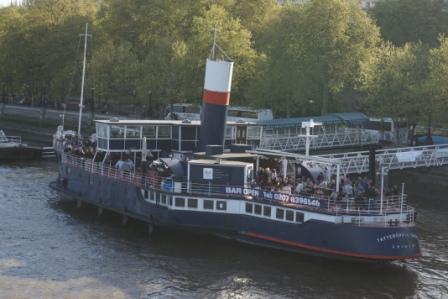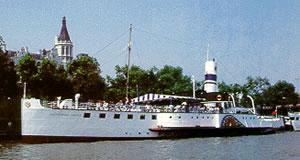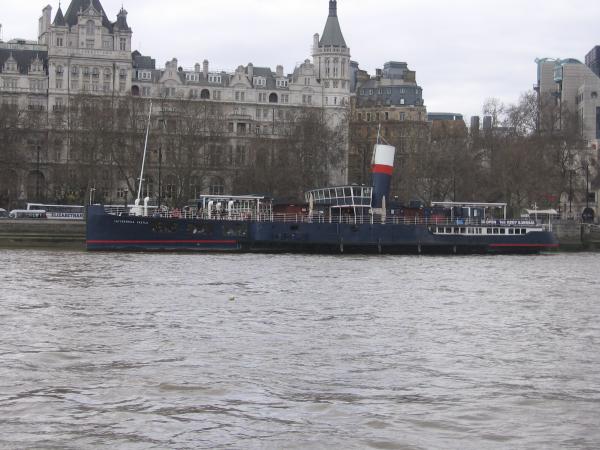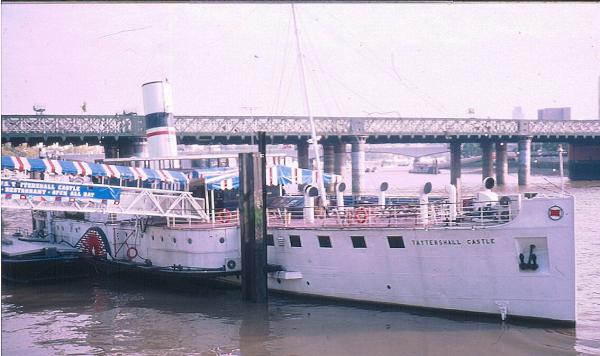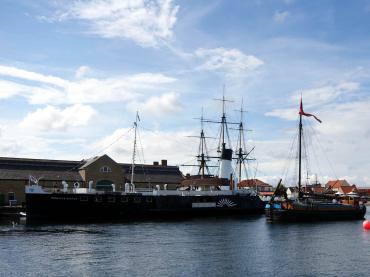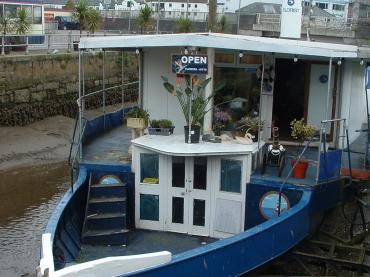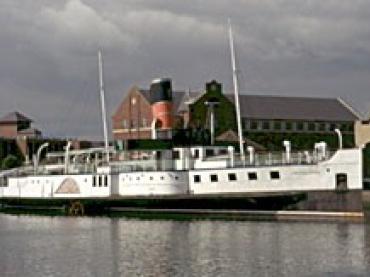

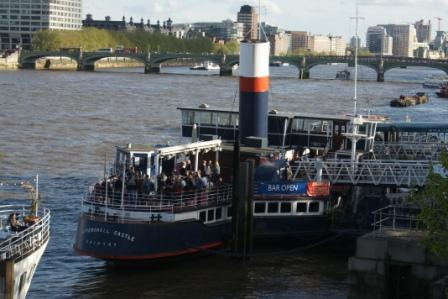
Details
Construction
Dimensions
History
Built in 1934 by William Gray & Co.,West Hartlepool for London & North Eastern Railway Company, TATTERSHALL CASTLE is a paddle steamer with a steel hull and a triple expansion steam reciprocating engine built by Central Marine Engines Works, Hartlepool. She was a passenger ferry on the River Humber between Hull and New Holland with a passenger capacity of 1050. She sailed on this route up to eight times a day until her retirement in 1973. TATTERSHALL CASTLE was used briefly during the Second World War as a tethering vessel for barage balloons in the Humber estuary before returning to duty ferrying troops and munitions, and she was one of the first civilian vessels to be equipped with radar. Her postwar service on the Humber ferry continued until 1973 when she was laid up. In 1976, she was sold to become a floating art centre and conference centre on the Thames. In 1981, she was sold to the Chef & Brewer Group, and repairs and a refit were carried out by Acorn Ship Repairs on the River Medway. She reopened as a pub and restaurant on London's Victoria Embankment in 1982. A further refit was carried out by Crescent Marine Services on the Medway in 1991, and another costing £4.75m in 2003-04 at Great Yarmouth. Her appearance progressively changed to incorporate an enclosed main deck aft, a new bridge structure with large windows replacing the wheelhouse. Larger windows were cut into the forward lounge on the port side, and the paddle wheels were removed (and the ship lost her distinctive fan-shaped paddle-box vents). She is thus much more substantially altered than her two sister ships. Her original engines are still in place and can be viewed behind glass by visitors. Source: Paul Brown, Historic Ships The Survivors (Amberley, 2010), updated Mar 2011.
Key dates
-
1934
Built by William Gray & Co. of West Hartlepool for the London & North Eastern Railway Company
-
early 1940s
Used briefly during Second World War as tethering vessel for barage balloons in Humber estuary
-
1940s
Equipped with radar and returned to duty ferrying troops and munitions
-
1973
Served as passenger ferry on River Humber between Hull and New Holland until laid up
-
1975
Sold to become floating art gallery and conference centre on the Thames
-
1981
Sold to Chef & Brewer Group and repairs and refit carried out by Acorn Ship Repairs
-
1982
Reopened as pub and restaurant on London's Victoria Embankment
-
1991
Further refit carried out by Crescent Marine Services on the Medway
-
2003-04
Major refit costing £4.75m carried out at Great Yarmouth
-
2017
Still in use as a pub and restaurant on London's Victoria Embankment
Sources
Brouwer, Norman J, International Register of Historic Ships, Anthony Nelson, pp177, Edition 2, 1993
Sullivan, Dick, Old Ships, Boats and Maritime Museums, Coracle Books, 1978
Steamboat Register: An illustrated Register of surviving steam vessels in the British Isles, Steam Boat Association of Great Britain, Edition 6, May 1994
D'Orley, Alun, The Humber Ferries, Nidd Valley Narrow Guage Railway Ltd, 1968
Ships Monthly: Dining Afloat: A review of Britain's floating restaurants, December 1990
Own this vessel?
If you are the owner of this vessel and would like to provide more details or updated information, please contact info@nationalhistoricships.org.uk

